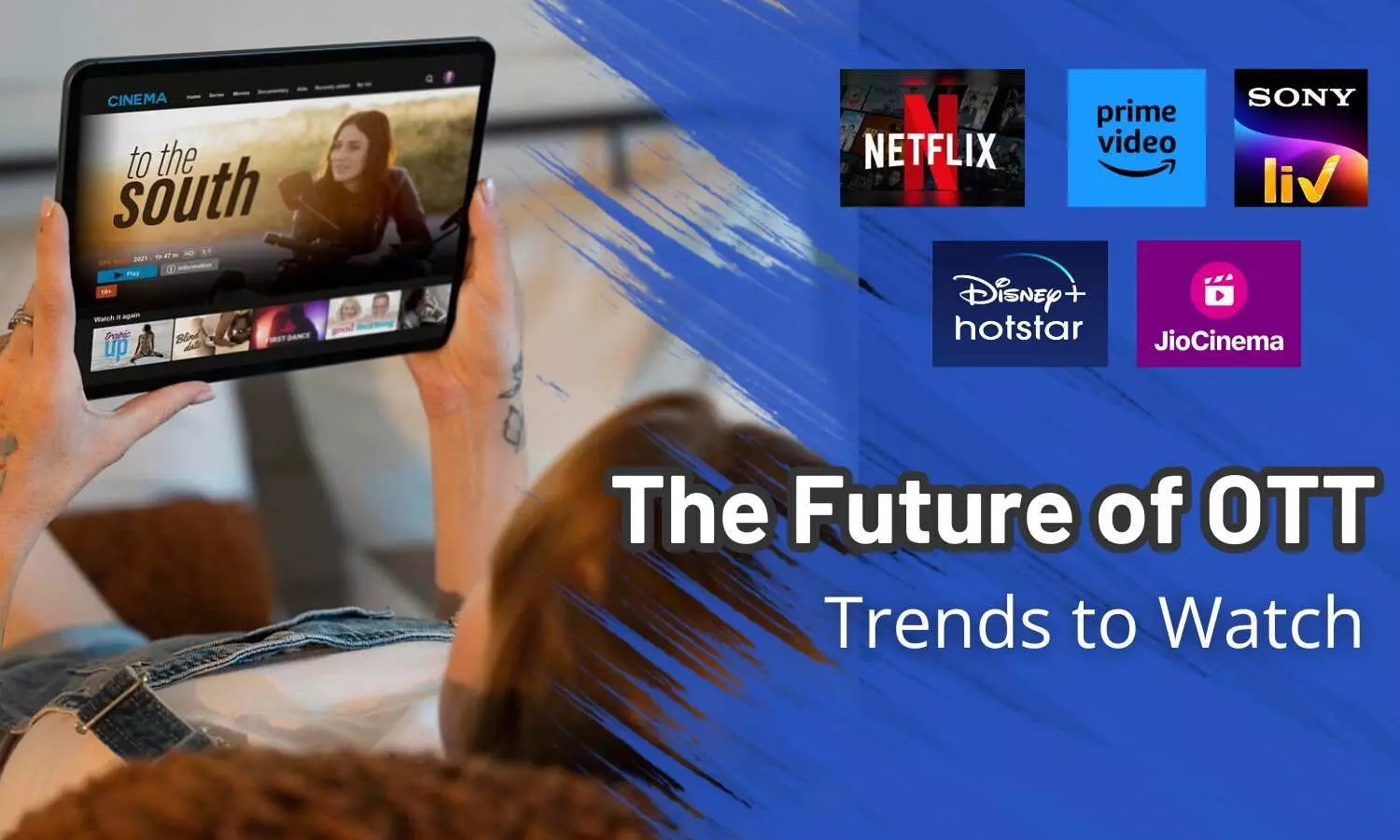The Future of OTT: Trends to Watch
The future of OTT is surely brimming with untapped possibilities, thanks to the changing viewing attitude of audience and technological advancements. Here’s an overview of the trends set to transform the next era of OTT.
The Future of OTT: Trends to Watch

Individuals' entertainment consumption habits have significantly transformed. From cable TV to on-the-go content consumption, the core of entertainment has changed to become more mobile and portable. This has paved the way for new trends to transpire in the entertainment landscape. One such new trend that is gaining ground is on-demand streaming services, or what we better call 'OTT platforms'.
The advent of OTT platforms marks a huge leap from the traditional forms of media consumption. Ditching the conventional elements of entertainment, OTTs seek to provide great flexibility and control, content diversity and smooth accessibility across different devices, meeting the demands of today’s audience.
Top trends: Reshaping the future of OTT
New subscription models: While subscription-based models are standard for OTTs, various new models are emerging. These include ad-supported tiers, micro-transactions, and bundled offerings, amongst others. Free, Ad-Supported Streaming TV (FAST) services, in particular, are gaining significant attention. These sorts of services offer free content supported by advertisements, catering to a broader diaspora of audience, including those hesitant to pay subscription fees.
Growth of niche-specific platforms: More niche-specific platforms are on the rise, thanks to technological developments. This has opened the gateway for small-scale content creators to launch platforms tailored to specific demographics. Whether it is a particular genre, hobby, language, or cultural niche, technological wonders have aided these niche platforms to prosper in a competitive streaming arena.
Rise in original content creation: OTT platforms can be seen increasingly prioritizing original content in light of the changing audience preferences. Original shows and movies are unique to each platform, which adds to their popularity amongst viewers. In view of this, it is not only the big OTT players but also the smaller streaming services that are moving towards original content production with the motive of attracting viewers.
International expansion: OTT platforms are in the midst of global expansion, targeting wider audiences. The upcoming years are poised to witness OTT services extensively tapping into international markets. This expansion will lead to greater localization and internationalization efforts, with a focus on creating regionally relevant content to attract a global viewership.
Quality>quantity: Modern-day audiences are largely prioritizing quality viewing, levying the onus on OTTs to strive for supreme. The development in streaming technology, including 5G, AR and VR has enabled these streaming services to enhance the quality of their offerings. In conjunction with high-quality streaming experiences, premium and niche content has become a crucial differentiator for these platforms. As we look ahead, the focus on superior streaming experiences will increase, rendering it essential for OTT streaming services to emphasize quality.
AI prominence: AI is dominating nearly every industry and the video streaming sector is no exception. From tailored recommendations and automatic content filtering to enhanced data analytics, OTT platforms are leveraging AI to enhance end-user experiences. Going ahead, these streaming services will continue harnessing the might of AI advancements to create a more personalized viewing environment for the audience.
The appeal of OTT platforms is surely not fading away anytime soon. In fact, in the coming years, it will take over as the primary source of entertainment consumption. Thus, it is vital for OTT providers to embrace innovations and advancements as a means to become more relevant and stay ahead of the competition.

